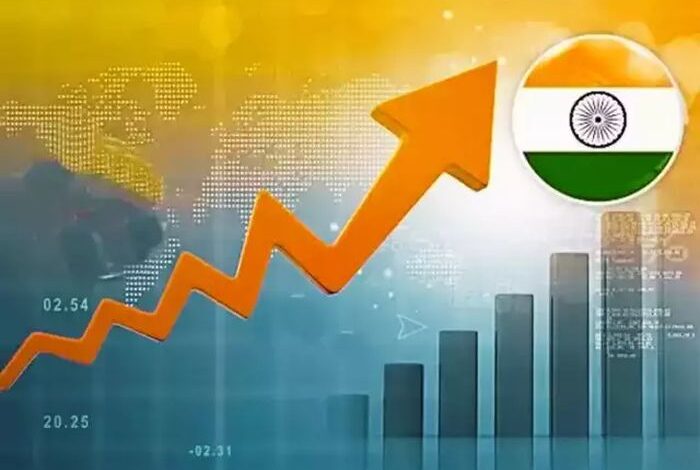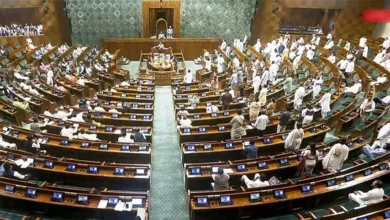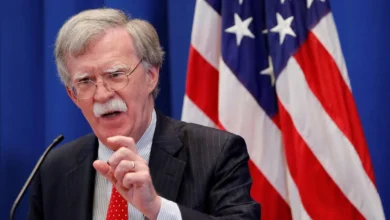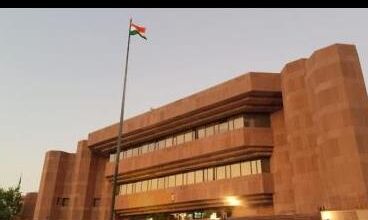India’s upward stride in internet connectivity boosts its inexorable economic march

Last year, a survey predicted that by 2025 India will touch a landmark 900 million active internet users, a deadline which is just a few months away. However, the government is already marching towards shaping up a digitally transformed nation by adopting result-oriented policies.
The 900 million mark prediction was made by the Internet and Mobile Association of India (IAMAI) and KANTAR in 2023.
India is cruising ahead in its digital transformation journey and it is clear from the recent data released by the Telecom Regulatory Authority of India (TRAI) that says the overall teledensity in the country has increased from 84.51% at the end of March 2023 to 85.69% at the end of March 2024 at a yearly rate of growth of 1.39%.
The report further highlighted that broadband services maintained their upward trajectory, with the number of broadband subscribers increasing from 84.6 crore (846 million) in March 2023 to 92.4 crore (924 million) in March 2024.
This robust growth rate of 9.15% with a massive addition of 7.8 crore (78 million) broadband subscribers underscores the importance of high-speed connectivity.
The report showed that the total number of internet subscribers increased from 88.1 crore (881 million) at the end of March 2023 to 95.4 crore (954 million) at the end of March 2024 with yearly rate of growth of 8.30%, leading to addition of 7.3 crore (73 million) internet subscribers in the last one year.
All this data points to the success of the Indian government in achieving the digital march that PM Narendra Modi had envisioned when he came to power in 2014 after registering a landmark victory in the general polls.
The TRAI report mentioned the number of wireless data subscribers has increased from 84.6 crore (881 million) at the end of March 2023 to 91.3 crore (913 million) at the end of March 2024 with a yearly rate of growth of 7.93%.
Further, the total volume of wireless data usage increased from 1,60,054 PB during the year 2022-23 to 1,94,774 PB during the year 2023-24 with yearly growth of 21.69%, the report showed, pointing to the strong steps taken in the country’s digital landscape.
The data gives a boost to PM Modi’s Digital India initiative which completed its nine-year journey this year since it was launched on July 1, 2015.
The initiative changed into a movement and today the intense penetration of the internet and the uptick in data consumption reflect the way the stance touched the majority of lives in the country.
Noting the completion of nine years of the project, Modi had rightly said: “A Digital India is an empowered India, boosting ‘Ease of Living’ and transparency. This thread gives a glimpse of the strides made in a decade thanks to effective usage of technology.”
Under the Digital India Initiative, the government has taken several initiatives to connect not only Metros but also tier-2 and tier-3 cities as well as rural and remote areas.
As of March 2024, out of a total Internet Subscribers of 954.40 million in India, there are 398.35 million Rural Internet Subscribers. Further, as of April 2024, out of 6,44,131 villages in the country (villages data as per Registrar General of India), 6,12,952 villages are having 3G/4G mobile connectivity. Thus, 95.15 % villages have access to the internet.
Under Digital India Initiative, various technology-led startups and innovation schemes like Technology Incubation and Development of Entrepreneurs (TIDE 2.0), Gen-Next Support for Innovative Startups (GENESIS), domain specific Centres of Excellence (CoEs) and Next Generation Incubation Scheme (NGIS) have been undertaken with a total funding outlay of around Rs 800 crore in the country including tier-2 and tier-3 cities.
In addition, the government launched India BPO (Business Process Outsourcing) Promotion Scheme (IBPS) & North East BPO Promotion Scheme (NEBPS) by setting up 246 units of BPO operations across 27 States/UTs of the country distributed across 104 small cities/towns.
In a report published in 2023, the Confederation of Indian Industries said digitization is poised to drive India’s ambitious journey towards becoming a US$ 10 trillion economy by 2035, revolutionizing sectors such as finance, healthcare, education, and industry.
After a remarkable 4G penetration, India launched its 5G data technology in 2022 and a Deloitte India-led report projected the Indian telecom industry to grow by US$12.5 billion every three years.
“India is all set to pave its path towards ‘Atmanirbhar Bharat’ as 5G will accelerate economic growth, increasing job opportunities and connecting the urban and rural population. It will drive efficiency in critical sectors, such as energy, healthcare, and agriculture, a step in the direction of not only commercial consideration but also social outcomes,” the company had said in its report.
According to an earlier Ericsson-Arthur D Little study, 5G will enable Indian mobile service providers to generate USD 17 billion in incremental revenue from enterprises by 2030.
“5G can play an important role in achieving India’s digital inclusion goals, especially in bringing broadband to rural and remote homes. Trials have proven the potential offered by 5G to bridge the digital divide by enabling access to high-speed broadband through FWA,” it had said.
India aims to become a developed nation by 2047 and the rise in internet penetration and a wholesome strengthening of digital parameters are expected to help the country touch the landmark moment sooner than expected.










